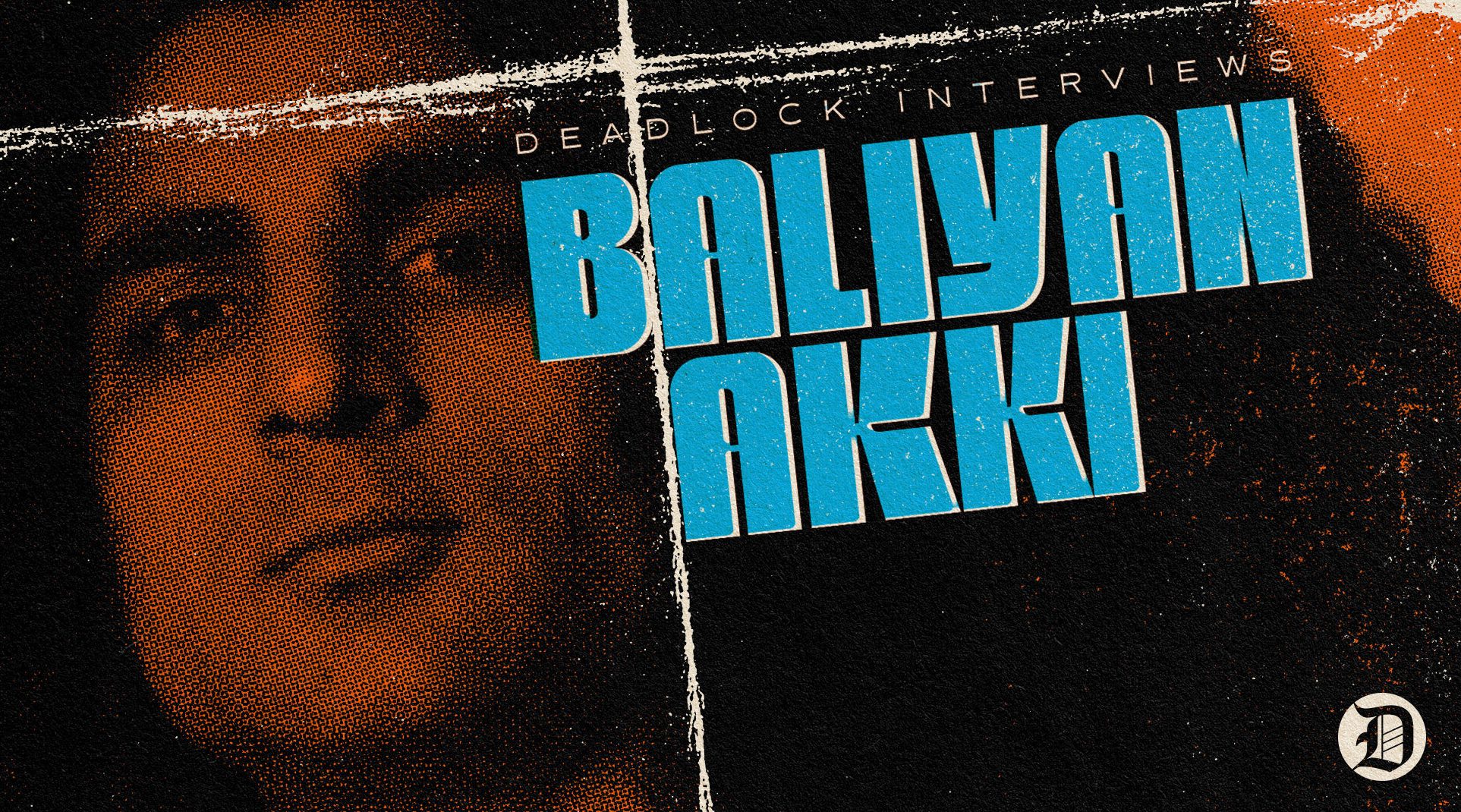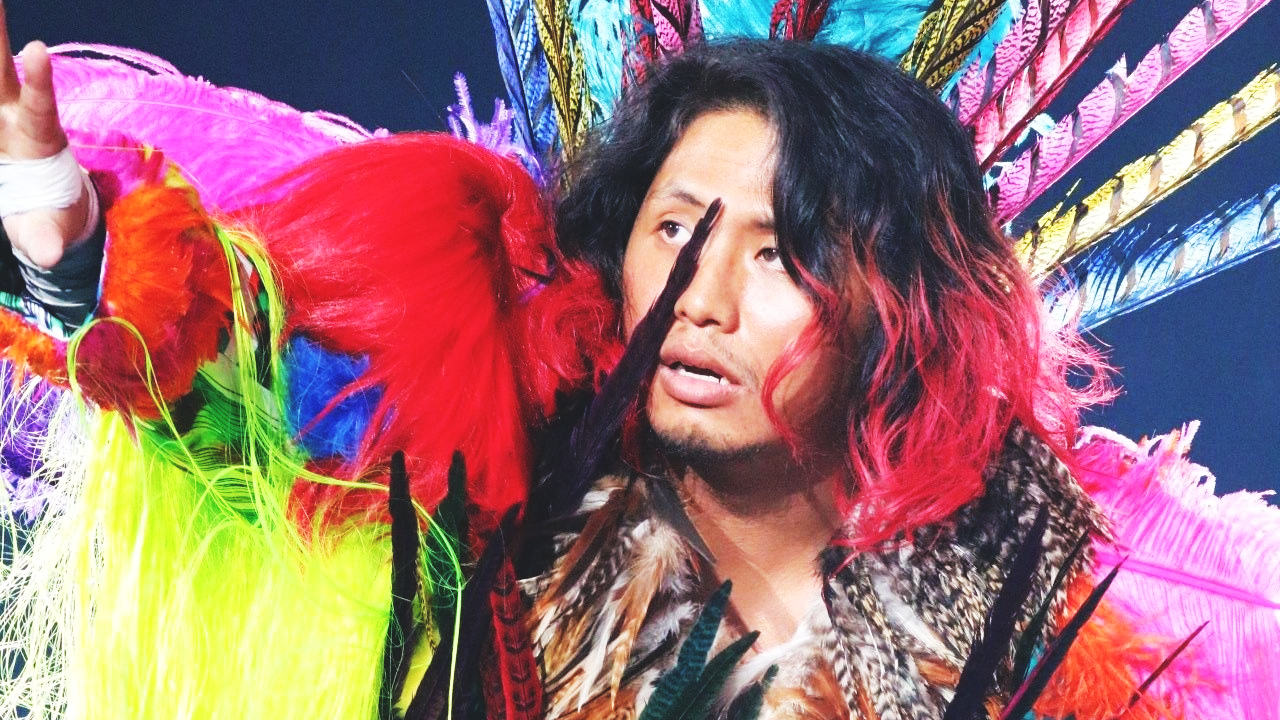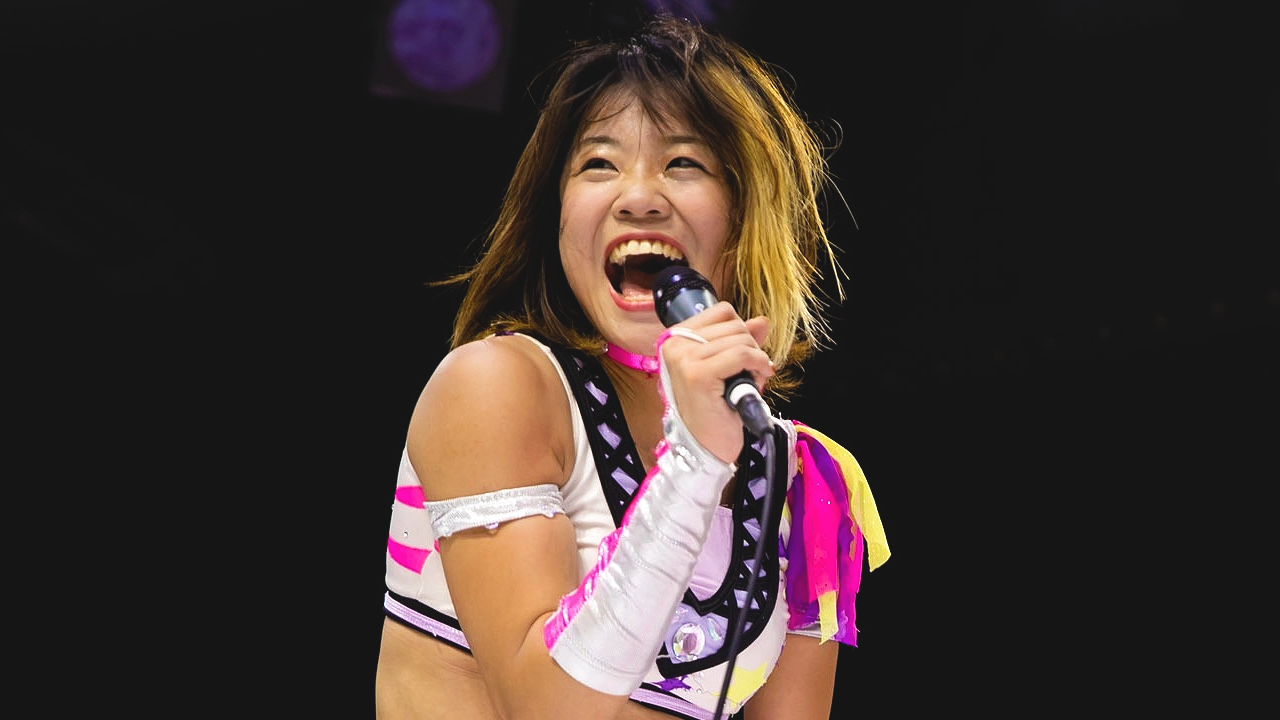There’s something about the crash of light tubes against skin that never really gets old to me. When I first decided to give deathmatch wrestling a shot early last year, I was instantly addicted. My taster was the main event of FREEDOMS Blood X’mas 2018, perhaps throwing myself in at the deep end. Skin was punctured, glass was smashed, by the end of it all of the ring mat was soaked in blood, and the two competitors involved were almost unrecognizable. Thing is, I didn’t watch any other form of wrestling for the next week. I was addicted. These wrestlers are special, not least because they showcase all the skills and talents asked of your average wrestler today in between cutting each other open, but also because they are intensely passionate about the art they are creating.
I wrote about Toshiyuki Sakuda earlier this year, looking towards the future of deathmatch wrestling, which was coming off of an incredible decade talentwise; the likes of Jun Kasai, Nick Gage, Ryuji Ito, Alex Colon, Abdullah Kobayashi and many more had offered consistent quality throughout the 2010s, and once GCW started up, fans were spoilt for choice. However, there’s one name it would be downright criminal to leave out of the conversation. Masashi Takeda has been a step ahead of the competition for years now and shows no signs of slowing down.
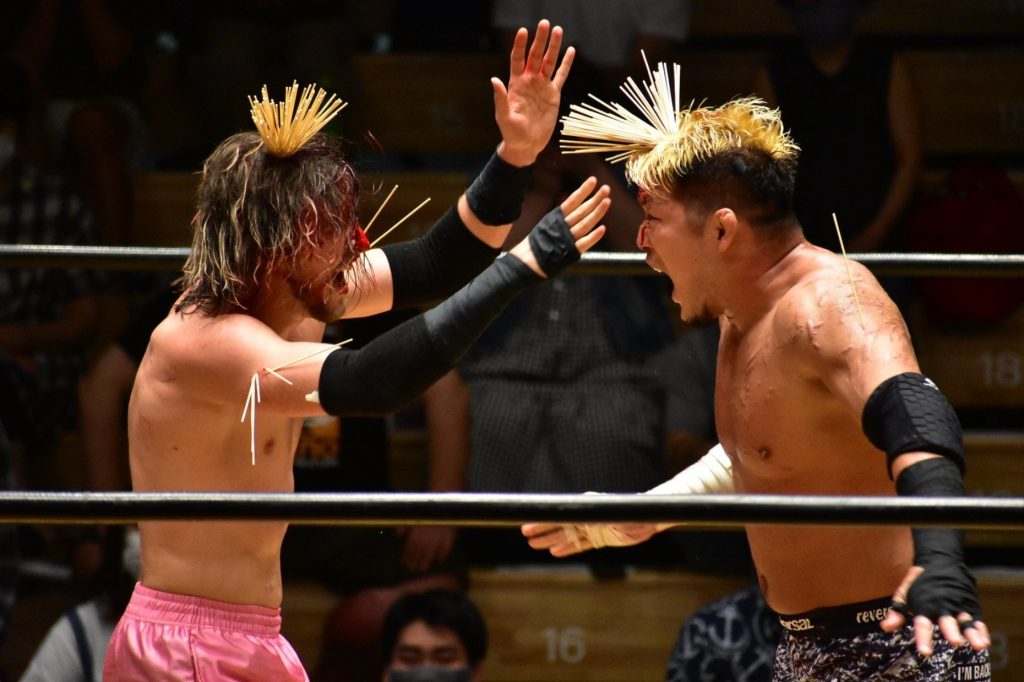
The ‘Crazy Kid’ has been widely regarded as the top deathmatch performer in the world for a while, mainly thanks to an MVP 2018 year which I will delve into later, but older followers have been singing his praises from the first matches they’d seen. Takeda’s roots lie in MMA, where he mainly competed in ZST from 2005-2008 achieving a 10-4 record. He had an impressive 8-1-1 run before his switch to wrestling full-time, and I often wonder where he would be now if he had never changed over. His style is of course heavily influenced by this background – five of his mixed martial arts victories came from submissions, so he knows what he is doing on the mat. Just as impressive is the fluidity of his suplexes, lariats, various slams, everything on the professional wrestling side, no matter the size of his opponent. If you want to see a young Takeda in action during the early stages of his wrestling career, he faces Yujiro Yamamoto on this Battlarts show on IWTV.
Takeda was a huge fan of Big Japan in his youth, so it’s no surprise that he only debuted around a year before his first deathmatch. In his second year with Big Japan, the Crazy Kid not only put up a stellar challenge to Yuko Miyamoto’s Deathmatch Heavyweight Title, but also claimed the promotion’s tag titles alongside Isami Kodaka. In the next few years, as he further cemented himself as a star against names like Jun Kasai, Ryuji Ito, and Takashi Sasaki, he was quickly starting to rack up prominent scars on his chest which nowadays define his look, in contrast to most of his peers who take the majority of their bodily wounds to the back. A defining match from this period took place when Takeda challenged for the Deathmatch Heavyweight belt once again in 2013, this time against one Shuji Ishikawa. The giant was in the middle of his monster run with the belt, an unstoppable force that even the ruthless and brutal Takeda couldn’t topple. It would take tons of spilled blood, some painful headbutts and an indescribably insane bump to put him down, and it must have been weeks before Takeda stopped feeling the effects of what he had been put through. Nevertheless, he persisted, finally reaching some singles deathmatch gold in Sasaki’s FREEDOMS at the end of 2014.
Its around this time that Masashi Takeda would begin to ascend as a superstar, while the wider world was beginning to mention his name more and more. By now he had made a few appearances in CZW and WXW, and his FREEDOMS title run impressed with defences against Daisuke Masaoka, Violento Jack, and more. After dropping the belt, in what certainly sounds like a strange turn of events, he began an All Japan junior division run. Forever the gold standard for a ‘hybrid wrestler’, Takeda took to the new environment like a duck to water, soon challenging the late Atsushi Aoki for his Junior Heavyweight Title. 2017 featured impressive AJPW Junior Battle of Glory and Junior Tag Battle of Glory runs, while he also flew to the United States to debut for the newly minted Game Changer Wrestling in New Jersey. Most notable of all, Takeda finally managed to win the BJW Deathmatch Heavyweight Title and begin his only reign with the belt to date, albeit one of the best title runs I have ever witnessed; Yes, it’s finally time to talk about Masashi Takeda’s 2018.

My only regret as a deathmatch wrestling fan so far is that I was simply a year too late to follow the Crazy Kid’s magnum opus, although I wouldn’t be a bit surprised if he has another one in him. Coming into 2018, things got off to a great start when Takeda defended his BJW title against Takumi Tsukamoto, while just weeks later winning the promotion’s tag championships with the same man. March saw him defend both of these belts in just a matter of days, although the pair would drop the tag titles in April. All this did of course, was free up space on Takeda’s shoulder to carry the King of FREEDOMS World Championship once more, which he took from Violento Jack in May. Through this, Masashi Takeda had just become the first man ever to hold both FREEDOMS’ and Big Japan’s deathmatch titles at the same time. Just three days later, he defended his Big Japan gold against Abdullah Kobayashi and in June, against Isami Kodaka in what I honestly consider my favourite match of all time. All of this, and we’re only halfway through the year.
Mexico’s Miedo Extremo was next to challenge for the FREEDOMS belt in July, and by all means Takeda could afford a small break in August, right? Instead, he enters the AJPW Junior Tag Battle of Glory just like the year before, teaming with Atsushi Maruyama and winning half of their six matches. He defeats Yuko Miyamoto to hold on to the Big Japan strap, and to close out the month, because it is Jun Kasai’s 20th wrestling anniversary, the two batter each other in FREEDOMS until the entirety of Korakuen Hall is painted red. Even still, Takeda leaves a double champion. September delivered some international success for the man at GCW’s Nick Gage Invitational 3, after defeating Isami Kodaka, Markus Crane and Gage himself in a four-way to win the tournament. To put a cap on his incredible BJW Deathmatch Heavyweight Title run, Takeda defended against Ryuji Ito under a 300 Light Tubes stipulation, before finally tasting defeat at the hands of Masaya Takahashi in November. The Crazy Kid would lose his King of Freedoms World Championship just a month later, in a rematch with Kasai that would later get me hooked on the genre for good.
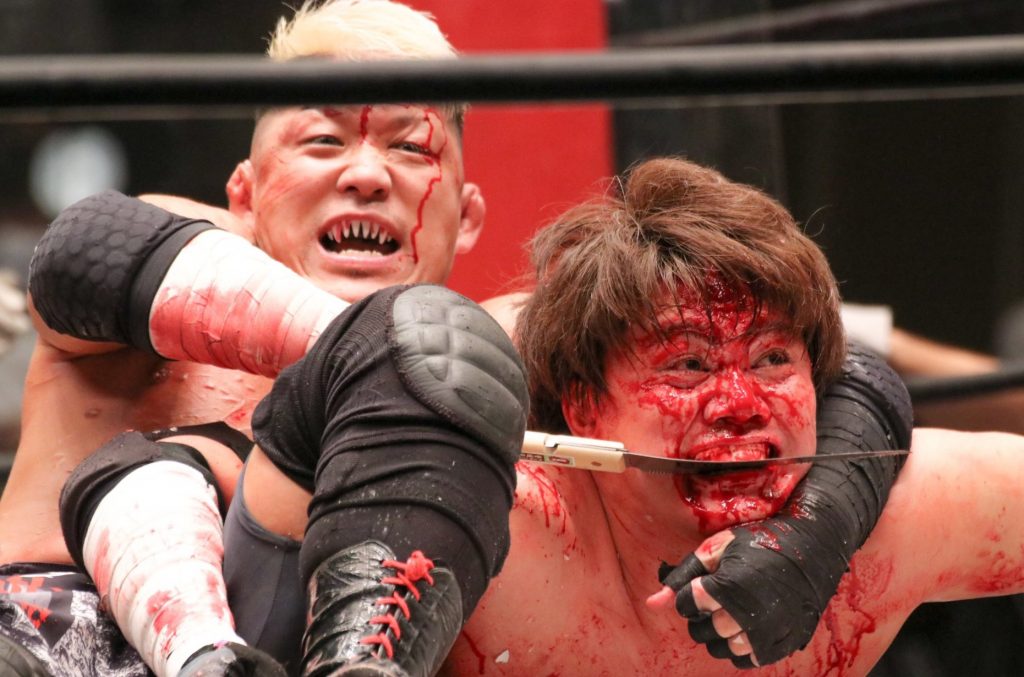
To put things into perspective, Masashi Takeda was entering arenas with the two main Japanese deathmatch straps over his shoulders for 194 days. A feat never done before, and never done since. His title defences didn’t miss a beat, like an album that doesn’t have any skips. Takeda won MVP at the 2018 Japanese Indie Wrestling Awards, and Match of the Year for his Kodaka title defence in Big Japan, while its also worth noting that he took part in four of the five nominated matches for the award. A performer carrying a promotion’s top prize has a certain responsibility to deliver as best they can as they lead a promotion forward. It goes without saying that Takeda not only proved himself beyond capable of this task, but to successfully do it for two promotions at once was a legendary achievement.
In the last couple of years, Takeda has increased his variety of promotions as a freelancer and upped his travelling, returning to the United States for WrestleMania Weekend, taking part in GCW and Fight Club Pro’s tours of Japan, and even heading to Australia. Praise is at an all time high for the Crazy Kid, and although he hasn’t been busy with any more title reigns yet, he made news earlier this year after being injured falling on a board of kitchen knives. His back may have resembled fish gills in the aftermath, but that did not stop him cutting a promo before he was rushed out of the arena, taking some months off to recover. This is the type of deathmatch wrestler Masashi Takeda is – completely fearless in the face of danger, to the point where he enjoys the pain he is put through and loves dealing it out just as much. Oh, also, he owns this really cute owl named ‘12’, and you can follow 12’s Twitter account here.
While there is currently no FREEDOMS subscription service to watch Masashi Takeda’s 2018 title reign, you’ll find his Big Japan reign on BJW Core. To keep up with Takeda in the present, you can use BJW Core and follow FREEDOMS with a Nicopro subscription.




